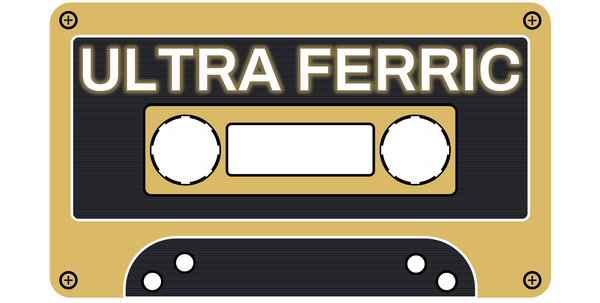
2-Head vs. 3-Head Cassette Decks: Does Headcount Really Matter?
Share
2-Head vs. 3-Head Cassette Decks
Introduction
When comparing cassette decks, the debate between 3-head and 2-head designs is a timeless one among audiophiles and analog purists. But does head count really matter when it comes to sound quality and recording precision? In this guide, we explore what cassette heads do, compare deck types, and help you determine whether a 2-head or 3-head deck is the right fit for your listening or recording needs.
What Are Cassette Deck Heads?
Cassette deck heads are crucial for analog audio systems, handling the reading, writing, and erasing of magnetic signals on tape. A standard cassette deck includes:
* Erase head: Clears previously recorded material.
* Record head: Imprints new magnetic signals on the tape.
* Playback head: Reads the recorded data and converts it into an audio signal.
In 2-head decks, the record and playback functions are combined into a single head. In 3-head decks, each function has a dedicated head, offering more precision and flexibility.
Cassette tapes utilize a four-track system, with two tracks per side, enabling stereo playback and the ability to flip the tape for extended listening. In contrast, professional multitrack recorders may employ all four tracks (or more) in one direction, facilitating simultaneous recording of multiple channels.
Figure 1 - 2 track vs. 4 track heads

The construction of each head includes a magnetic core with a narrow gap. The gap width varies depending on the function: playback heads have narrower gaps enhancing high-frequency response while recording and erasing heads use wider gaps to achieve better magnetic saturation and ensure robust signal imprinting.
Typically, playback heads require narrow gaps to reproduce high frequencies, while erase and recording heads use wider gaps to allow higher magnetic flux to pass through and better imprint the tape.
Understanding Head Count in Cassette Decks
Cassette Players:
Cassette players typically use a single playback head, as they have no need for recording or erasing tapes. Auto-Reverse cassette players may use a rotating 2-track head or a 4-track head where half of it is used for playback in each direction.
2-Head Recording Decks:
A 2-head cassette deck typically has an erase head and a single combined record/playback head. This means the same head is responsible for both recording and playback functions, while a separate erase head clears the tape before recording.
3-Head Recording Decks:
A 3-head deck features three distinct heads: one for erasing, one for recording, and one for playback. This separation allows each head to be optimized for its specific function-recording, playback, or erasing-resulting in better overall performance.
Some 3-head decks (Many Nakamichi models for example) feature completely discrete playback and recording heads that use separate mounts so that each can be adjusted individually and independently. Most 3 head decks utilize a single assembly that contains both the record and playback heads which are aligned at the factory.
Figure 2 – separate playback and record heads in one assembly
Multi-Head Recording Decks:
While the vast majority of cassette decks fall into the above 3 categories, some manufacturers came up with unique designs that featured multiple heads in less conventional configurations.
For example, the AKAI twin field super GX head features a recording gap and a playback gap, each with its own coil windings, in a single head housing. Some auto reverse decks used dual-erase heads to allow recording in both directions.
Key Advantages of 3-Head Decks
Real-Time Monitoring:
The standout feature of a 3-head deck is the ability to monitor the recording in real time. As the tape passes from the record head to the playback head, you can listen to what’s being laid down on the tape instantly, rather than waiting until the recording is finished. This lets you catch and correct issues like distortion or dropouts in real time.
Optimized Head Design:
Since the record and playback heads are separate, their magnetic gaps can be tailored for their specific tasks. The record head can be optimized for high-frequency response and signal transfer, while the playback head can be tuned for detailed audio retrieval. In contrast, a 2-head deck’s combined head is a compromise between both functions, which can limit ultimate fidelity.
On-the-Fly Calibration:
Many 3-head decks allow for fine-tuning of bias and recording level settings while recording. This means you can adjust for tape type or batch variations without the trial-and-error process of recording, rewinding, and checking results as required on a 2-head deck.
Are 3-Head Decks Always Superior?
While 3-head decks offer clear technical advantages, the real-world impact depends on your needs and the specific model of the deck.
Recording Quality:
In theory, 3-head decks can achieve higher fidelity recordings due to optimized heads and real-time calibration. However, a high-quality 2-head deck can still produce excellent recordings, especially if it features good electronics and precise calibration.
Playback Quality:
Playback fidelity can be slightly better on a 3-head deck, but the improvement may be subtle, especially with casual listening. For many users, the difference is not dramatic unless you are pushing the limits of the cassette format.
Convenience and Workflow:
The biggest practical advantage of a 3-head deck is efficiency. Real-time monitoring and calibration save time and make it easier to achieve the best possible recording quickly. For users who frequently record and want to maximize quality, this is a significant benefit. Note that some early 3-head decks did not offer real-time monitoring, so always check the specifications of the deck in question.
Maintenance and Complexity:
3-head decks are more complex, with more parts that can potentially go out of alignment. Some users note that maintaining perfect alignment between the record and playback heads can be tricky, and misalignment can lead to recording and playback quality degradation.
Is Headcount the Only Thing That Matters?
Absolutely not. Other factors such as motor quality, tape transport stability, electronics, and build quality also play a crucial role in overall performance. Some high-end 2-head decks can outperform mediocre 3-head models. Additionally, features like adjustable bias, Dolby calibration, and robust transport mechanisms can make a bigger difference than head count alone.
Comparison Table: 2-Head vs. 3-Head Cassette Decks

Conclusion: Does Head Count Matter?
Head count does matter, especially for those who value the highest possible recording quality, real-time monitoring, and the ability to fine-tune recordings on the fly. For serious recordists, archivists, or audiophiles, a 3-head deck is the clear winner.
However, for casual listening or occasional recording, a good 2-head deck can be more than sufficient-and often more affordable. Ultimately, the best choice depends on your priorities: if you want convenience, flexibility, and the best possible sound, go for a 3-head deck. If you’re on a budget or mainly playing tapes, a quality 2-head model will serve you well.
Interested in specific models or tips for choosing the right deck?
Have a great day and remember to TAPE IT EASY!
